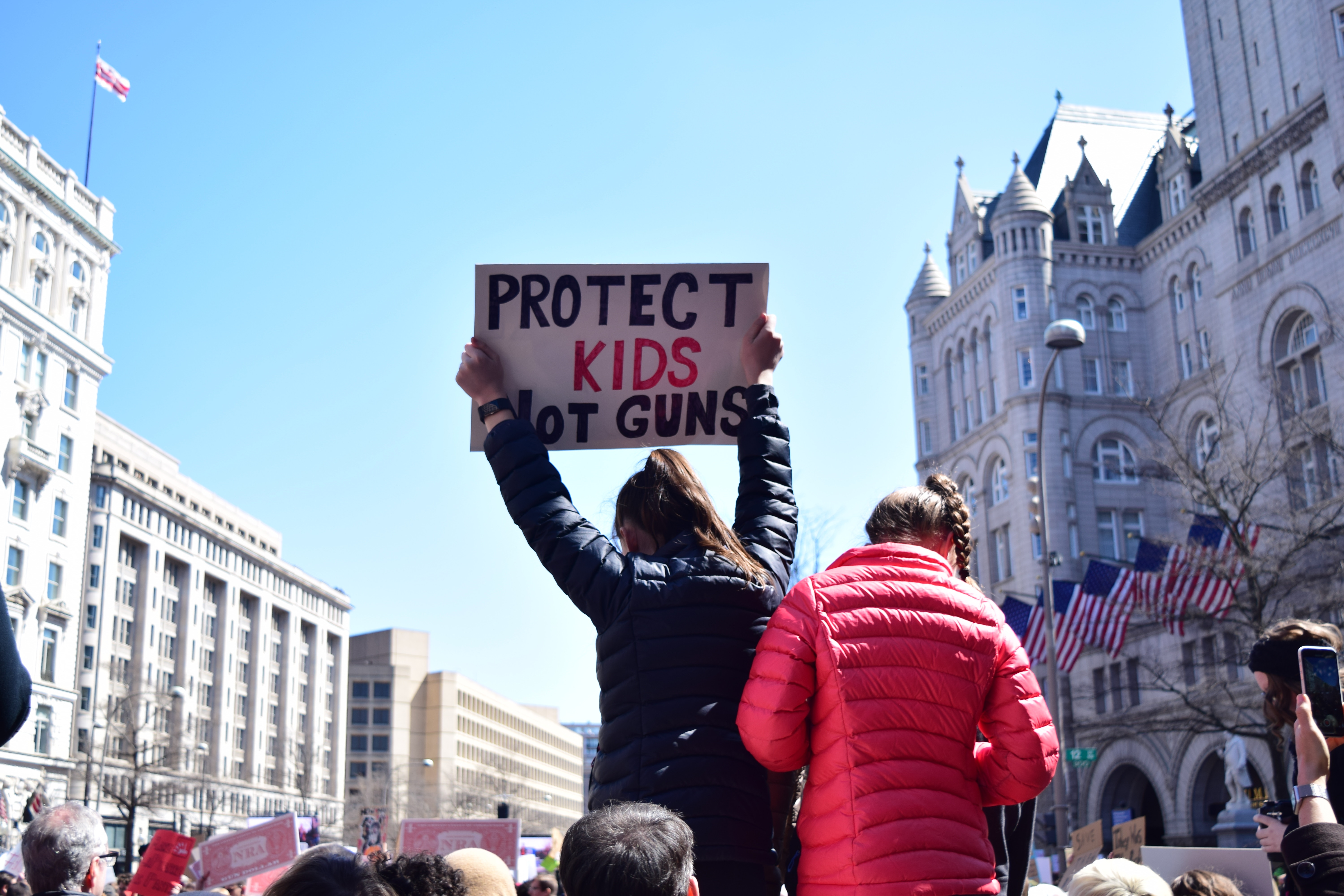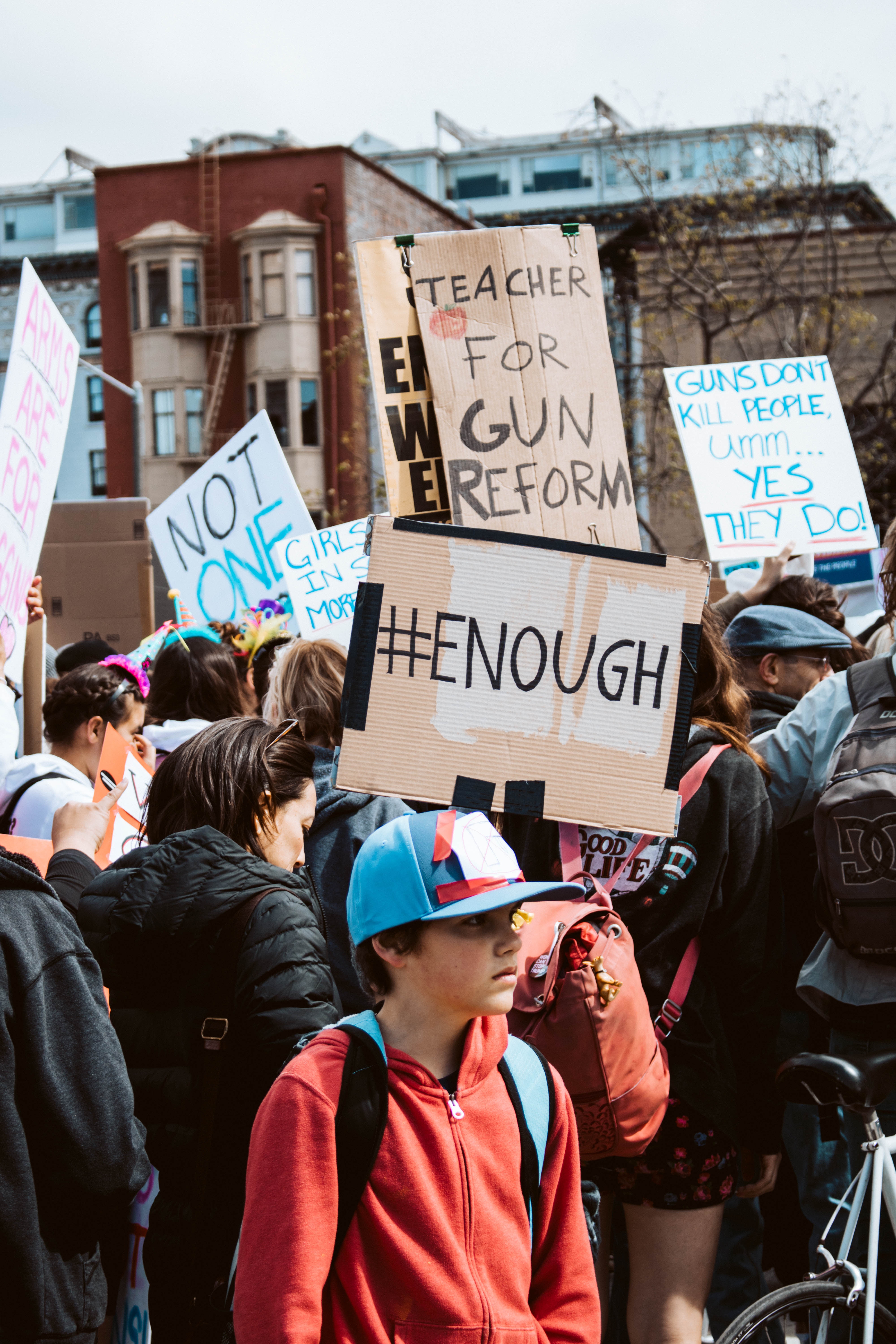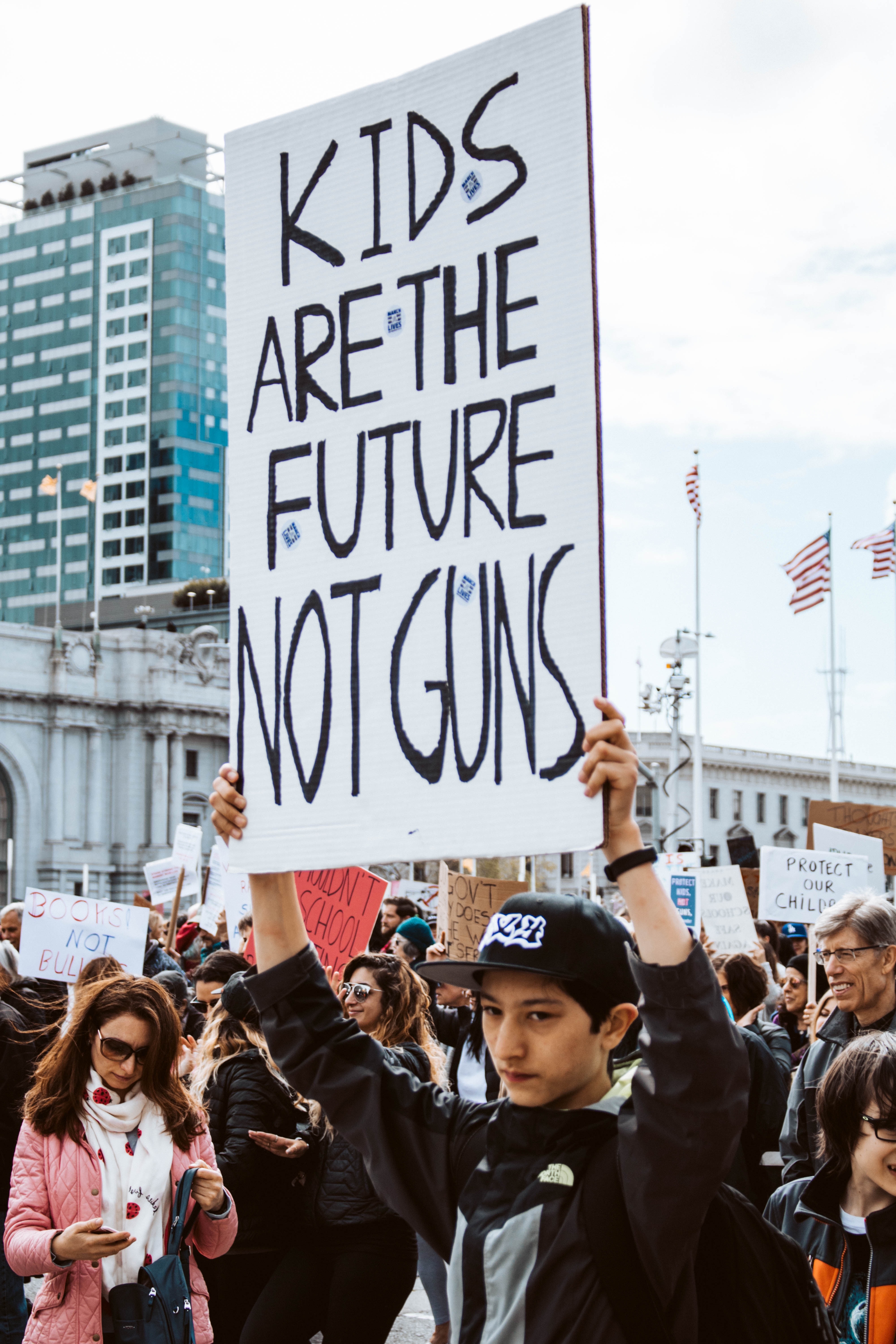Gun Violence Among Our Children
Gun violence is having a devastating impact on children and teenagers in America.
Nearly 2,900 children and teens (ages 0 to 19) are shot and killed and nearly 15,600 are shot and injured every year — that’s an average of 51 American children and teens shot every day.1 And the effects of gun violence extend far beyond those struck by a bullet: gun violence shapes the lives of the millions of children who witness it, know someone who was shot or live in fear of the next shooting.
CHILD AND TEEN GUN DEATHS PER YEAR, BY INTENT:2

Gun violence is now the second leading cause of death for American children.3
This is a uniquely American problem. Compared to other high-income countries, American children aged 5 to 14 are 21 times more likely to be killed with guns; and American adolescents and young adults aged 15 to 24 are 23 times more likely to be killed with guns.4
 When American children and teens are killed with guns, 58 percent are homicides — about 1,700 per year.5 For children under the age of 13, these gun homicides most frequently occur in the home and are often connected to domestic or family violence.6
When American children and teens are killed with guns, 58 percent are homicides — about 1,700 per year.5 For children under the age of 13, these gun homicides most frequently occur in the home and are often connected to domestic or family violence.6
Another 36 percent of child and teen gun deaths are suicides—over 1,000 per year.7 When children under the age of 18 die by gun suicide, they are likely to have used a gun they found at home: over 80 percent of child gun suicides used a gun belonging to a parent or relative.8 For people of all ages, having access to a gun significantly increases the risk of death by suicide and homicide.9
 Gun violence disproportionately impacts Black children and teens, who are nearly four times more likely than white children and teens to be killed with guns.10 This is driven by a substantial disparity in gun homicide rates: Black children and teens are 14 times more likely than white children and teens of the same age to die by gun homicide.11 Firearms are the leading cause of death for Black children and teens.12
Gun violence disproportionately impacts Black children and teens, who are nearly four times more likely than white children and teens to be killed with guns.10 This is driven by a substantial disparity in gun homicide rates: Black children and teens are 14 times more likely than white children and teens of the same age to die by gun homicide.11 Firearms are the leading cause of death for Black children and teens.12
An estimated 3 million American children witness gun violence every year.13 Witnessing shootings can have a devastating impact. Children exposed to violence, crime, and abuse are more likely to abuse drugs and alcohol; suffer from depression, anxiety, and post-traumatic stress disorder; fail or have difficulties in school, and engage in criminal activity.14,15
In America, children and teenagers are victimized by gun violence every single day. No child should experience this — not in their schools,16 not in their homes, and not in their communities.
 As a mother, the safety of my children and grandchildren is the most important thing in the world to me. Let me know what you think we can do about guns. Let's start the conversation.
As a mother, the safety of my children and grandchildren is the most important thing in the world to me. Let me know what you think we can do about guns. Let's start the conversation.
Please consider following Moms Demand Action on Facebook or on Twitter for all the latest news about our campaigns and more ways to get involved.
- Hanks A, Solomon D, Weller, CE. Systematic inequality. Center for American Progress. February 21, 2018. https://ampr.gs/2okO7qy; Chandler A. Interventions for reducing violence and its consequences for young black males in America. Cities United. 2016. https://bit.ly/2xGoNPG.
- Centers for Disease Control and Prevention. National Center for Injury Prevention and Control, Web-based Injury Statistics Query and Reporting System (WISQARS) Fatal Injury Reports, Nonfatal Injury Reports. A yearly average was developed using five years of the most recent available data: 2013 to 2017. Children and teenagers aged 0 to 19.
- Finkelhor D, Turner HA, Shattuck A, Hamby SL. Prevalence of childhood exposure to violence, crime, and abuse: results from the National Survey of Children’s Exposure to Violence. JAMA Pediatrics. 2015;169(8):746-54. Everytown analysis derives this number by multiplying the share of children (aged 0 to 17) who are exposed to shootings per year (4%) by the total child population of the US in 2016 (~73.5M).
- Centers for Disease Control and Prevention. National Center for Injury Prevention and Control, Web-based Injury Statistics Query and Reporting System (WISQARS) Fatal Injury Reports. Data reflect a five-year average (2013 to 2017) of gun deaths by intent. Homicide intent includes gun deaths by homicide and legal intervention. Intent category averages may not total to yearly average due to rounding. Children and teenagers aged 0 to 19.
- Centers for Disease Control and Prevention. National Center for Injury Prevention and Control. Web-based Injury Statistics Query and Reporting System (WISQARS) Leading Causes of Death, 2017. The analysis includes children and teenagers aged 1 to 19, Black defined as non-Hispanic, age 0 to 1 calculated separately by the CDC because the leading causes of death for newborns and infants are specific to the age group.
- Grinshteyn E, Hemenway D. Violent death rates in the US compared to those of the other high-income countries, 2015. Preventive Medicine. 2019;123:20-26.
- Centers for Disease Control and Prevention. National Center for Injury Prevention and Control, Web-based Injury Statistics Query and Reporting System (WISQARS) Fatal Injury Reports. A yearly average was developed using five years of the most recent available data: 2013 to 2017. Children and teenagers aged 0 to 19, homicide includes legal intervention.
- Fowler KA, Dahlberg LL, Haileyesus T, Gutierrez C, Bacon S. Childhood firearm injuries in the United States. Pediatrics. 2017;140(1).
- Everytown for Gun Safety. Mass Shootings in the United States, 2009-2017. https://every.tw/1XVAmcc. December 2018.
- Adhia A, Austin SB, Fitzmaurice GM, Hemenway D. The role of intimate partner violence in homicides of children aged 2-14 years. American Journal of Preventive Medicine. 2019;56(1):38-46.
- Centers for Disease Control and Prevention. National Center for Injury Prevention and Control, Web-based Injury Statistics Query and Reporting System (WISQARS) Fatal Injury Reports. A yearly average was developed using five years of the most recent available data: 2013 to 2017. Children and teenagers aged 0 to 19.
- Centers for Disease Control and Prevention. National Center for Injury Prevention and Control, Web-based Injury Statistics Query and Reporting System (WISQARS). A percent change was developed using 2008-2017 crude rates for children and teens (aged 0 to 19).
- Anglemyer A, Horvath T, Rutherford G. The accessibility of firearms and risk for suicide and homicide victimization among household members: a systematic review and meta-analysis. Annals of Internal Medicine. 2014;160(2):101-110.
- Azrael D, Cohen J, Salhi C, Miller M. Firearm storage in gun-owning households with children: results of a 2015 national survey. Journal of Urban Health. 2018;95(3):295-304. The study defined children as under the age of 18.
- Johnson RM, Barber C, Azrael D, Clark DE, Hemenway D. Who are the owners of firearms used in adolescent suicides? Suicide and Life-Threatening Behavior. 2010;40(6):609-611.
- Everytown for Gun Safety. Gunfire on School Grounds. 2019. Everytown defines gunfire on school grounds as “any time a gun discharges a live round inside (or into) a school building, or on (or onto) a school campus or grounds, where “school” refers to elementary, middle, and high schools—K-12—as well as colleges and universities.”






